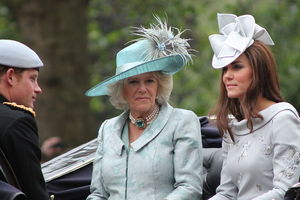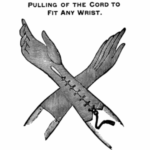American women have forsaken the wearing of hats for occasions for several decades now, shrinking the high fashion and bespoke millinery business to next-to-nothing. In America, some say that John F. Kennedy’s hatless appearance at his 1961 presidential inauguration was the beginning of the end of the hat as essential attire in this nation, falling the way of ladies’ gloves. But in Britain, fashion-conscious society rules are tightening up in favor of hats. Our British cousins are particularly keen on the tradition of wearing hats or fascinators for social gatherings, from royals to just about everybody.
British cousins
In Britain in the 80s, it was still commonplace to see businessmen on the pavements in the Square Mile, as the financial district is known, sporting a bowler and brolly. To this day, headgear is traditionally worn to social gatherings, such as weddings, horse races, boating events, especially for events with the royal appellation. Ladies’ Day at Royal Ascot is known to be an occasion when British women sport the largest, most bizarre hats imaginable. In recent years, many of the younger set have opted for the variation popularly re-introduced in the 90s, a fascinator, which is attached to a clip or headband.
Fascinated with fascinators
The headpiece known as a fascinator is a winner for modern women. Wearers avoid the helmet head effect of having one’s hair flattened by a hat, always a dilemma when the wearer wishes to remove it. A fascinator blocks no one else’s view so can remain on when indoors, they are lightweight, and can be easily packed. It seemed that HRH Queen Elizabeth II herself was won over; she appeared wearing a grey feathered fascinator to the Windsor Castle 2008 wedding of her eldest grandson, Peter Phillips. Now the rules are being tightened in favor of traditional hats, as fascinators are specifically banned from Royal Ascot.
Royal Ascot revisions
No relaxation of dress codes is occurring during England’s summer social season. It’s quite the opposite. As of summer 2012, fascinators are banned from the Royal Enclosure and Grandstands at Ascot where the measurement of a hat base must be at least four inches in diameter. Style rules regarding no bare shoulders or midriffs, minimum one inch dress strap widths, knee length hems, and all gentlemen in grey or black morning suits and top-hat are spelled out precisely and enforced by a brigade of purple-suited female fashion police with hats and pashminas for obligatory rentals.
Crazy is allowed
The backlash is to meet the rules but flaunt the ridiculous. Ladies’ Day at Ascot 2012 saw hats done up as a plastic cooked breakfast platter, a set of Olympic rings made of balloons (the wearer was asked to leave), a Staffordshire tea pot, a gigantic Union Jack bow, a jug of lemonade upon a green tablecloth, an antique postage stamp, and a pair of young ladies employed by Debenham’s department store carrying signs of protest reading “Save the Fascinator.
People have worn hats throughout the ages, as a manner of protection, a display of status, as part of a uniform, as a fashion accessory, and to keep the head warm and dry. As it did rain on Royal Ascot last summer, we can forecast seeing more hats that do double duty as umbrellas this June.




